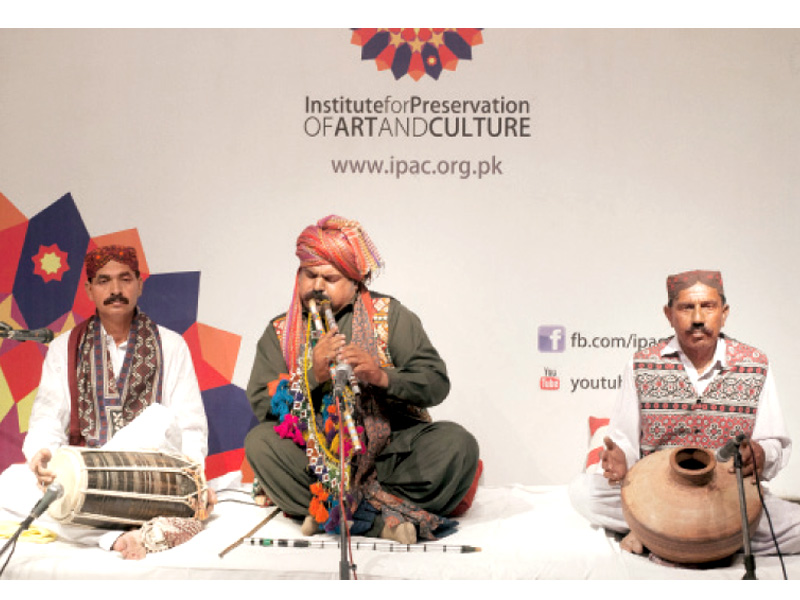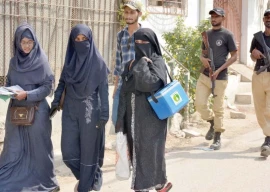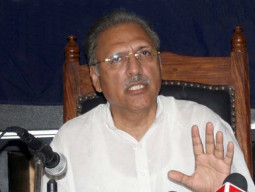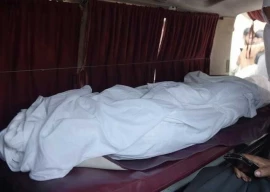
Classical music concerts have gained a silent following in the capital. There is something mildly exotic and oddly refreshing about them. Similarly, the eighth concert in the Instrumental Ecstasy series at Kuch Khaas on Saturday was a retreat into the rhythms from the Sindh and Thar Desert regions.
An increasing number of people from the diplomatic community have been warming up to the idea of classical and folk music as they get acclimatised to the nuanced tunes from this part of the world.
A regular visitor to these events is the one-year-old Qalandar, who displays a peculiar fondness for the music with that odd dance-like move between the straddling baby steps.
Saturday’s evening featuring Alghoza performances was a journey back in time. Akbar Khameeso Khan on the double-flute instrument, Alghoza was joined by Faiz Muhammad on the garha and Khan Muhammad on the dholak. Akbar started off by rendering the poetry of the Sindhi poet Shah Abdul Lateef Bhittai.
Variations of ragas and melodies introduced the Sindhi rhythm to the audience. Along the way, Akbar explained the various techniques and influences that had molded the musical form over decades.
He improvised some of the classical tunes, transforming them into folk melodies. The instrument demands an unbroken stream of breath, as the musician pumps air into the flute pipe. In sync with the other two instruments, the flutes bring out an enchanting mix of beat and melody — almost meditative.
Alghoza has a rich history. The instrument originated from the Middle East and travelling through Iran and Turkey, it finally reached Balochistan, Rajasthan and Sindh in the Indian Subcontinent.
Here, the maestros, particularly Ustad Misri Khan Jamali, gave it a local twist, adding their own touch of innovation to the ancient music form.
The wooden instrument initially comprised two flute pipes of the same length but over time, one of them was shortened for sound purposes. In the world of Alghoza playing, the two flute pipes are a couple — the longer one is the male and the shorter one the female instrument. With the use of beeswax, the instrument can be scaled to any tune.
Played on several occasions in Sindh, the instrument can symbolise joy, for instance when it is being played on wedding ceremonies. On the other hand, it also serves the “therapeutic” purposes of exorcism in some places, owing to its transcendental quality.
This diversity creates appeal for the well-travelled indigenous instrument. The distinct sound transports the listener to a place of sands and sufis.
In the words of IPAC CEO Umair Jaffar, “Akbar is that rare musician who is carrying forth his father’s legacy in playing the instrument. They have been through some financial crises but have kept the art form alive.”
The event was organised by the Institute for the Preservation of Art and Culture in collaboration with Kuch Khaas.
Published in The Express Tribune, August 26th, 2013.

1722586547-0/Untitled-design-(73)1722586547-0-165x106.webp)


1732326457-0/prime-(1)1732326457-0-165x106.webp)












COMMENTS
Comments are moderated and generally will be posted if they are on-topic and not abusive.
For more information, please see our Comments FAQ